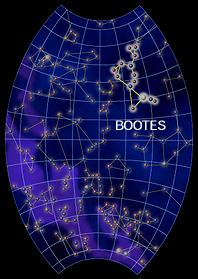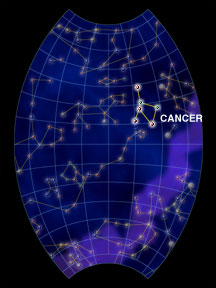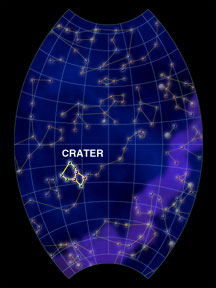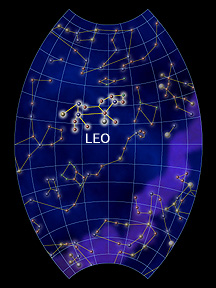Northern Hemisphere Constellations
Many different constellations fill the evening sky in the northern hemisphere. Depending on your location and the season, different constellations can be seen. Northern circumpolar constellations can be seen all year long in the night sky of the northern hemisphere, and appear to circle about the Pole star. This image shows an illustration of Ursa Major, the Great Bear.
You might also be interested in:

What types of instructional experiences help K-8 students learn science with understanding? What do science educators teachers, teacher leaders, science specialists, professional development staff, curriculum designers, school administrators need to know to create and support such experiences?
...more
Ursa Major is probably the most famous constellation, with the exception of Orion. Also known as the Great Bear, it has a companion called Ursa Minor, or Little Bear. The body and tail of the bear make
...more
Bootes, the herdsman, rides through the sky during the late Spring and early Summer. While he may have appeared as a shepherd to the ancients, modern star-gazers like us can easily recognize the shape
...more
Cancer, the Crab, is a member of the Zodiac, a group of constellations that the Sun travels through each year. Cancer is best seen during the month of March, but is visible from December through June.
...more
The constellation Crater is known as the Cup. Crater is a small constellation located between Hydra and Leo and next to Corvus. Crater is best seen sometime between March and June. You'll have to scan
...more
Hydra is the longest constellation in the sky and is also the largest in terms of area. It is so long that it takes more than six hours to rise completely. Along its northern side, we can observe the zodiacal
...more
The constellation Leo is known as the Lion. Leo's head and mane make up an upside-down question mark called the Sickle. One of the brightest spring stars, Regulus (Latin for "little king"), is at the base
...more
The constellation Virgo is known as The Maiden. The constellation represents almost every famous and powerful female in mythology, including Athena, Artemis, Persephone and Demeter. She is usually carrying
...more















